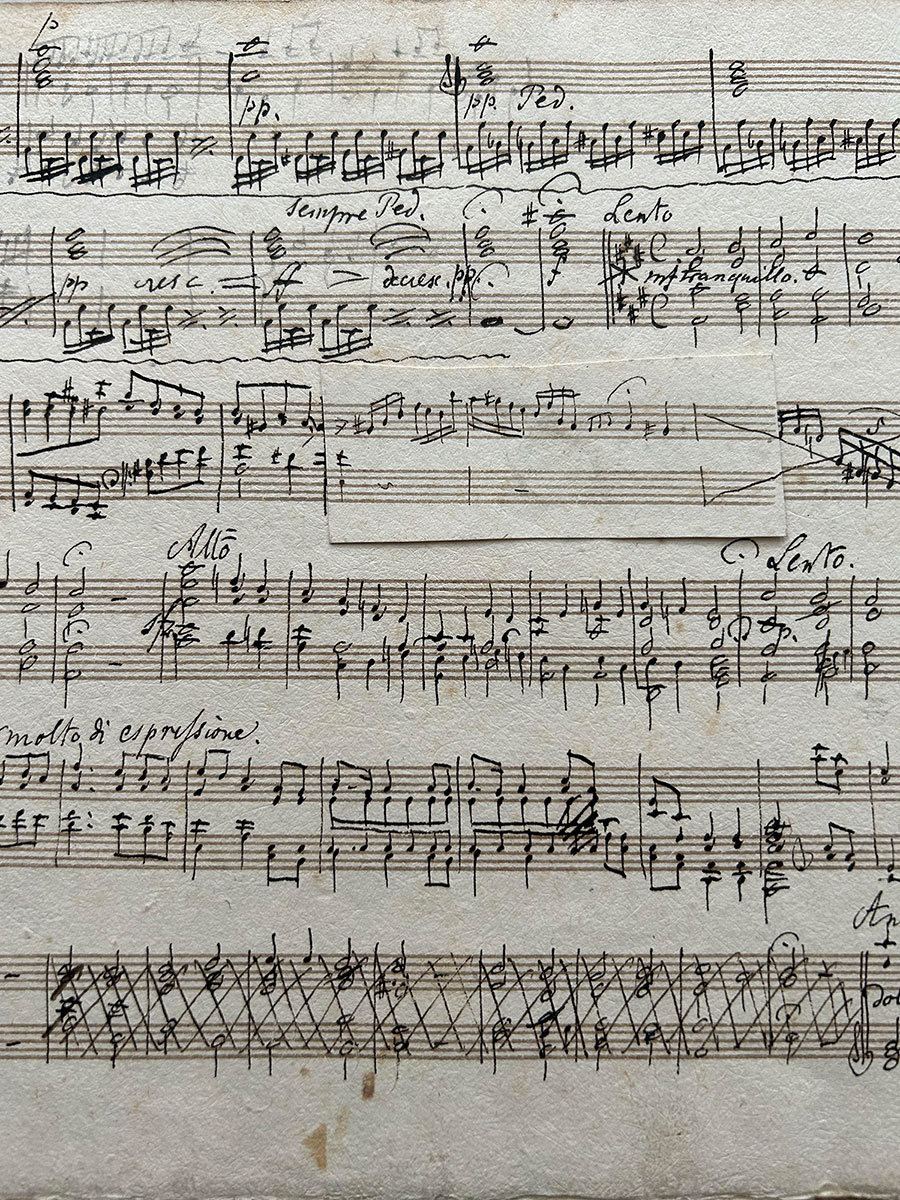In the late 1820s, the Mendelssohn siblings, Fanny (1805–1847) and Felix (1809–1847), enjoyed some of their happiest years. Their social circle expanded, enriching their lives with gatherings filled with poetry readings, conversations, and music. Rehearsals for the now-famous revival of J. S. Bach’s St. Matthew Passion began at the family home in October 1828.

Ostersonate: autograph manuscript, Fanny Mendelssohn (1805-1847), 1828. Robert Owen Lehman Collection, on Deposit at The Morgan LIbrary & Museum.
The family’s love of Bach's music contributed to the creation of an exceptional piece for piano with a fascinating history: the Easter Sonata. First mentioned in Fanny’s diary in April 1829, the work was lost for 150 years. In 1972, the manuscript surfaced in Paris. Signed "F. Mendelssohn," it was attributed to Felix and recorded by pianist Eric Heidsieck as the Sonate de Pâques, though the recording wasn't publicized or widely noticed. Some musicologists proposed that Fanny might be its true composer, but the idea was generally dismissed in the absence of an authenticated manuscript. When scholar Angela Mace Christian tracked down the manuscript in 2010, she confirmed that the handwriting is Fanny's. While some believed that Fanny had merely copied out her brother’s music, Angela had another piece of evidence: the numbered pages of the manuscript correspond to a section missing from one of Fanny's albums held in the Staatsbibliothek in Berlin. In 2012, the pianist Andrea Lam finally premiered the sonata, with Fanny at last acknowledged as the composer. Sofya Gulyak gave the UK premiere in 2017 on BBC Radio 3.
The Easter Sonata may represent a “finishing piece” for Fanny Mendelssohn’s musical education. Showing the stylistic influences of Bach and Beethoven, the music also conveys a distinct Mendelssohnian style that she and her brother Felix had been exploring. The first movement, a Beethoven-inspired sonata-allegro in A major, is followed by a movement in a ternary form, with the outer A sections containing prelude-like material, bookending a fugal B section that showcases chromaticism in the tradition of J. S. Bach. It is perhaps inspired by Bach’s St. Matthew Passion, which was then so present in the Mendelssohn home. A playful, slightly ominous Scherzo leads to the finale, a pianistic tour de force featuring tempestuous tremolo passages perhaps symbolizing the earthquakes from the Passion story and the moment of Christ's death when the Temple's curtain is torn. The sonata culminates in a luminous chorale fantasy on "Christe, du Lamm Gottes," a sixteenth-century Lutheran hymn that both Bach and Felix Mendelssohn also used in their music, reflecting the liturgical season during which Fanny composed her sonata. It was an extraordinary work for a young composer to create, only a year after Beethoven's death.
While most of Fanny Mendelssohn's compositions remained unpublished during her lifetime, three of her Lieder (songs) were published with her consent under Felix's name, in his Opus 9 in 1830, appearing as numbers 7, 10, and 12. Today, over 450 works by Fanny have been unearthed, which she wrote in the space of twenty-five years. Her remarkable productivity persisted even in the face of a late miscarriage, a stillbirth, the near death of her only surviving child, and her role as the family nurse.
A forthcoming documentary by Sheila Hayman, a descendant of Fanny Mendelssohn, follows the modern-day detective story of the Easter Sonata. Fanny’s original manuscript for the sonata, which had disappeared again in 2014, resurfaced last year when it was acquired by Robert Owen Lehman, who placed it on deposit at the Morgan Library & Museum with the rest of his collection. Fanny’s manuscript was received in October 2022 by the Morgan's curator of music, Robinson McClellan. At the Morgan, it will be safeguarded and accessible for study. Marie Rolf, professor emerita at the Eastman School of Music, has prepared a new critical performing edition, along with a facsimile of the manuscript, for publication by Bärenreiter. Hayman’s film features the young virtuoso Isata Kanneh-Mason, who is performing the work and recording it for Decca Classics for the first time in its definitive edition.
Robinson McClellan
Assistant Curator of Music Manuscripts and Printed Music
The Morgan Library & Museum
